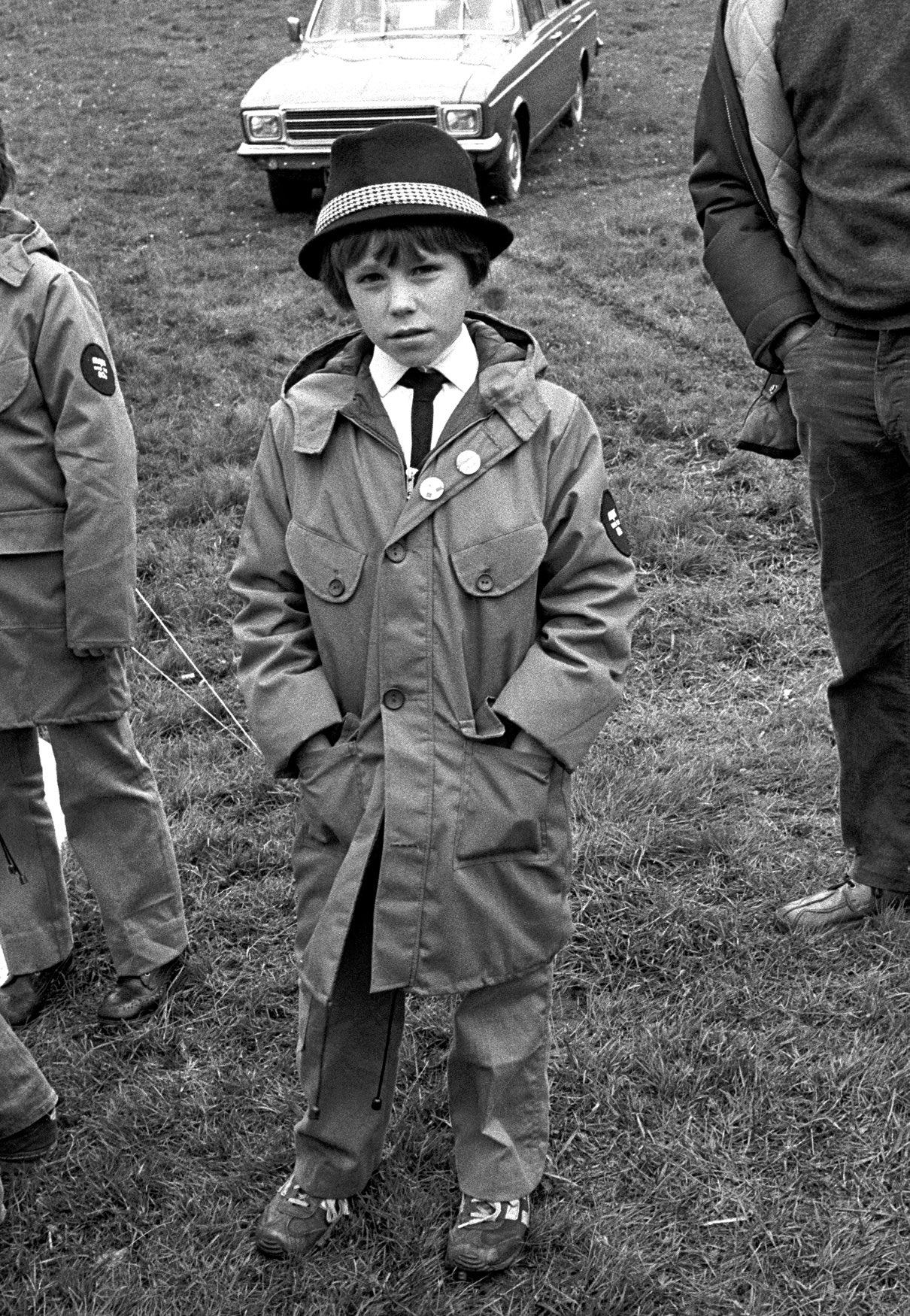Shooting the second wave of Britain’s mods and rockers
- Text by Miss Rosen
- Photography by Janette Beckman

Although her parents did not want her to be an artist, London native Janette Beckman convinced them to let her enroll on a foundation year at St. Martins School of Art in the 1970s. Once they agreed, Beckman moved to the South London neighbourhood of Streatham, where she paid £5 a week to rent a floor in a semi-squat inhabited by fellow art students.
Her love for portraiture led her to eventually take up photography at the London College of Communication. After discovering August Sander’s seminal monograph, People of the 20th Century, in the school library, Beckman began documenting the explosion of rebel culture in a series of street portraits made across the UK.
In Mods & Rockers Raw Streets UK 1979-1982 (Café Royal Books), Beckman takes us back to the second coming of these classic British subcultures – two groups who were, for a brief moment in time, each other’s natural enemies.
“Back in the ‘60s, the Mods and the Rockers used to have all these fights in Brighton,” Beckman says. “The Rockers rode bikes and the Mods rode their scooters, then they’d get together on the beach, get pissed, and battle each other. It was a huge scandal. It was an early youth rebellion.”
While America flourished after World War II, Britain lagged behind, rebuilding from the rubble of the war. Mods and Rockers initially took their cues from American fashion, music and film, until bands like The Who and The Jam came along and gave it a UK twist.

Islington Twins London 1981

Caister couple in parking lot 1980
By the late ’70s, a second wave had risen, fueled by kids old enough to rummage through their parents’ closets and don their highly prized garb. “Mod was a very sophisticated look,” Beckman says. “It was very different since it was happening in the time of punk, when people were literally cutting up garbage bags and putting them on with Doc Martens and an Army jacket.”
Beckman took her first youth culture portrait of the Islington Twins while teaching photography in East London in 1976 in East London, using a cheap Russian version of a Rolleiflex. She was wowed by their style and panache. “Mod clothes were very tailored: narrow trousers, skinny ties, and sharkskin suits,” she says. “It was a really smart look.”
Soon thereafter, Beckman discovered Rockabilly teen weekends at Caister-on Sea. “Kids would drive their best cars down there and bands would play,” Beckman says. “It would be on a dreary weekend when it was slightly raining and everyone would be eating fish and chips. Then, in the evening you’d get wasted on beer. You don’t need money to do it – you just get a leather jacket and dance.”
Beckman fondly remembers going to a Rockabilly night at an old dance club in the Strand with a bunch of friends during her art school days. She paired a black and green circle skirt with a sleeveless t-shirt that said “Elvis” in glitter and a pair of shoes with crystal plastic heels. “We would just go out there and dance with the old Rockers all night,” she remembers, fondly.

Phil from the Polecats, Caister 1980

Mod Girl London 1976

Islington Twins London 1979

Mod kid, Scotland 1981

Mods on scooter, Streatham 1976

Teddy Boy Caister 1980

Rockabilly Dance, Caister 1980
Mods & Rockers Raw Streets UK 1979-1982 is out now on Café Royal Books.
Follow Miss Rosen on Twitter.
Enjoyed this article? Like Huck on Facebook or follow us on Twitter.
Latest on Huck

Clubbing is good for your health, according to neuroscientists
We Become One — A new documentary explores the positive effects that dance music and shared musical experiences can have on the human brain.
Written by: Zahra Onsori

In England’s rural north, skateboarding is femme
Zine scene — A new project from visual artist Juliet Klottrup, ‘Skate Like a Lass’, spotlights the FLINTA+ collectives who are redefining what it means to be a skater.
Written by: Zahra Onsori

Donald Trump says that “everything is computer” – does he have a point?
Huck’s March dispatch — As AI creeps increasingly into our daily lives and our attention spans are lost to social media content, newsletter columnist Emma Garland unpicks the US President’s eyebrow-raising turn of phrase at a White House car show.
Written by: Emma Garland

How the ’70s radicalised the landscape of photography
The ’70s Lens — Half a century ago, visionary photographers including Nan Goldin, Joel Meyerowitz and Larry Sultan pushed the envelope of what was possible in image-making, blurring the boundaries between high and low art. A new exhibition revisits the era.
Written by: Miss Rosen

The inner-city riding club serving Newcastle’s youth
Stepney Western — Harry Lawson’s new experimental documentary sets up a Western film in the English North East, by focusing on a stables that also functions as a charity for disadvantaged young people.
Written by: Isaac Muk

The British intimacy of ‘the afters’
Not Going Home — In 1998, photographer Mischa Haller travelled to nightclubs just as their doors were shutting and dancers streamed out onto the streets, capturing the country’s partying youth in the early morning haze.
Written by: Ella Glossop